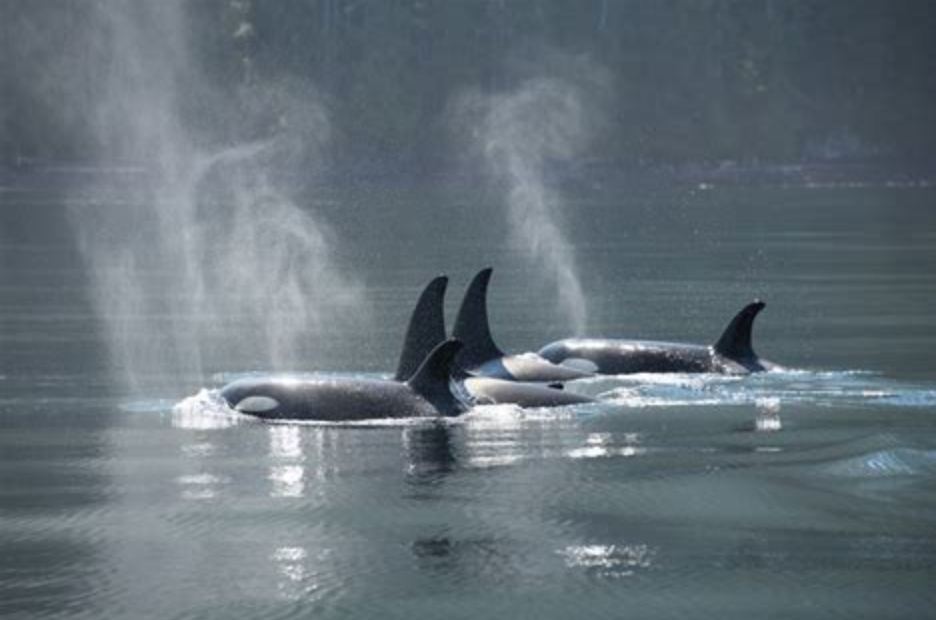
06.08.2018 – Alma negra – the black soul
August 15, 2018Daniel Jardim – Skipper & Guide
August 16, 2018One thing all toothed whales (Odontoceti) have in common is that they all have strange looking heads that differ in shape and size according to the species. Most sport round foreheads varying from the mildly pronounced bulbous bump of beaked whales, orcas and dolphins to the globular head of a Pilot Whale. The odd one out in the family happens to also be the largest toothed predator on the planet; the Sperm Whale. The rectangular head of this enormous species can represent up to one third of its body length and houses an internal complex of fatty organs not to mention the largest brain in the animal kingdom. But what is going on in that enormous skull of theirs? Recent research has gained insight into their social behavior and the most essential tool within it; communication. The organs resposible are all found in that big, blocky head of theirs.
In the last decades scientists have discovered that sound is both amplified and directed by the two large, fatty organs in the animals skull right above the mouth; the spermaceti organ and the junk. The junk consists of connective tissue and has been associated with ramming behavior amongst larger bulls, although this theory is not fully established. The spermaceti organ is responsible for the production of spermaceti, a waxy substance whose biological function includes buoyancy control and the focusing of soundwaves. It is assumed that sperm whales use the water entering their blowhole to cool the spermaceti in their head cavity. This turns the substance into a denser solid making them negatively buoyant and enabling them to dive efficiently to depths of up to 2,250 meters. Spermaceti also acts as a resonator for soundwaves produced by the respiratory organs behind the spermaceti organ. The process of how Sperm whales gain information on their deep, dark environment through the emission of such soundwaves is known as echolocation and relies on the „doppler effect“. This formidable predator is capable of making the loudest sounds of any animal on the planet and uses them to locate squids that may be up to 1km away.
When the whales aren’t hunting they use their acoustics to socialize with other members of their pod. Like all other toothed whale family members, Sperm whales have a complex social behavior. They exist in matriarchal groups which are herds lead by a females, while larger bulls lead a more solitary life and young males travel north in „bachelor“ groups to feed. Scientists from the University of Dalhousie in Hallifax, Canada have studied the communication within small matriarchal units of the larger sperm whale pods in the South Pacific Ocean and have observed that each pod has its own distinct „morse code“ of clicks with variations that are comparable to human dialect.
This implies patterns of speech between the animals that may vary according to their respective social group in the same way that dialect varies in human speech according to the region. The scientists went on to record the behavior and sounds of individual animals around the Galapagos islands in order to analyse the origin of their dialect and came to an astounding conclusion. The whales learn the accents from clan peers, indicating that it is obtained through social learning and is passed on over generations within the pod. Social learning is considered to be the very foundation of culture, finally granting Sperm whales a characteristic that was long solely attributed to our species and only recently has been associated with other cetaceans such as Orcas.
Researchers at the University of Southern Denmark made yet another jaw-dropping discovery while studying the communication among Sperm whales around the Azores just last year. The distinct sets of vocalizations made by members of a unit of Sperm whales were believed to be a communal sort of communication, with members of one group unanimously using their clicks to communicate with individuals of another. The scientists studied the series of tapping noises, known collectively as „codas“, among selected individuals in the Azores and were able to make out messages between the animals. This important discovery shows that these cetaceans not only communicate as a group but also have individual conversations with one another. If we consider their lifestyle, such conversations may include information on the depth to which they will dive to hunt or the location of nearby prey. Or a mother calling her calf to her side.
So what does the Sperm Whale say? We can only wonder and anticipate what further research on these mysterious animals science has in store for us.
your Guide Paula Thake




